What is the most common aging disease?
Know how aging affects your body!
Since we are born, we must grow old.
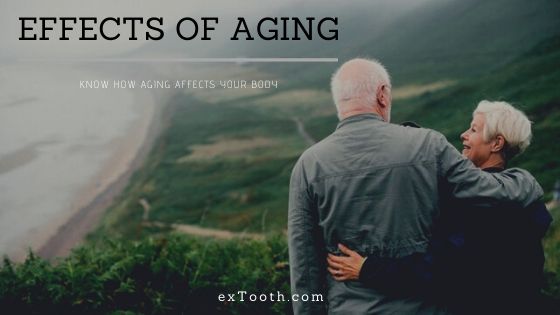
As we grow we pass through various stages of maturity, and degeneration. Eventually, all that is born has to die. This does not mean that all old people are about to die.
It is the duty of the health professional to try to increase the life span, improve quality of life to make later years of the elderly patient equally productive and enjoyable.
The concern for the dental problems of elderly citizens must be exercised with increased knowledge of biological factors. The elderly are not merely old age patients. They require a different approach, modified treatment planning and knowledge of how tissue changes affect oral health and services.
The dentist must understand the disorders of the elderly who need not be treated only by neuropathy, allopathy but as well as by psychotherapy.
The Prosthodontist plays a key role in diminishing the number of prosthetic features by a careful understanding of the physical mental and metabolic changes. The oral changes that occur during aging should be recognized, understood and treated before prosthetic restorations are prescribed for the individuals.
EFFECTS OF AGEING ON ORGAN SYSTEM AND AGING DISEASE
Aging occurs in each and every organ and tissue of the body. The changes occur to a variable extent in different organs. The wasted tissue is either not replaced at all or is replaced by a tissue of a different variety.
Just as the external features of our body deteriorate, similarly the internal organs of the body tend to fade in function.
Commonest among aging disease is the development of heart disease, stomach ailments, and more visibly the deterioration of oral health due to loss of teeth.
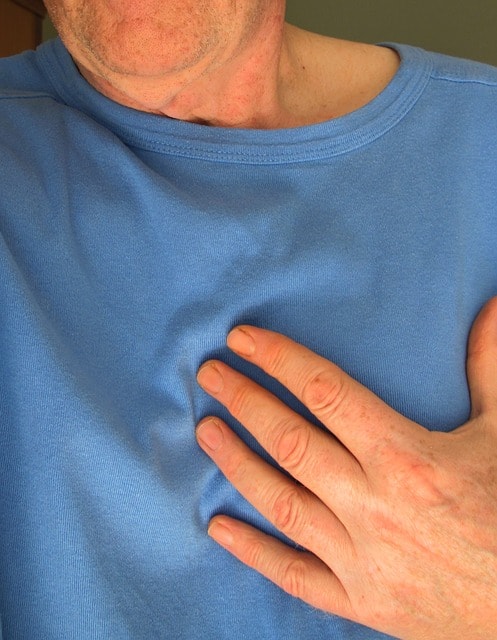
The resultant interdependence of one organ system on others makes things complicated during aging. Stomach ailments lead to poor nourishment, causing weak bones, and joints. Obesity contributes to this and Diabetes makes the situation more severe.
In other situations, a sedentary lifestyle exposes weak genetic traits such as Immune disorders.
In common instances, lifestyle-related disease is associated with heart disease.
Common is a heart attack, arrhythmias, and hypertension. Nerve degeneration is evident by poor eyesight, poor hearing, slower reflexes, deterioration in ability to learn.
Let us see in brief what changes occur in a different organ system.
THE GASTROINTESTINAL SYSTEM
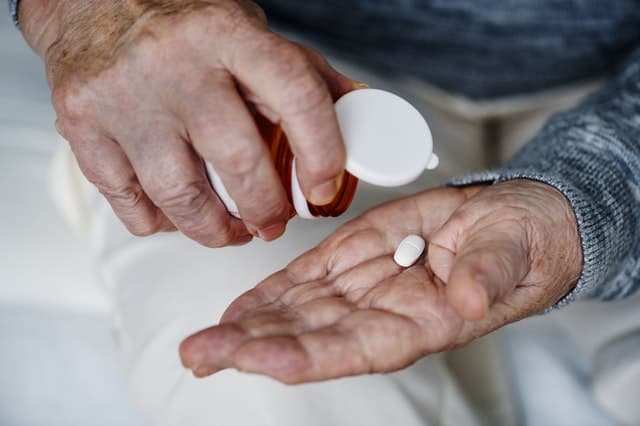
The intestine and the stomach are dilated which is also accompanied by atrophy of the glands causing irregularities in absorption and bowel. Calcium, iron, Vit. C is not absorbed properly as there is a decrease in the secretion of HCL.
There is also incomplete protein digestion as the secretion of proteolytic enzymes; pepsin, trypsin, and chymotrypsin are markedly reduced.
Dietary and lifestyle habits and side effects of medication leads to damage of the digestive tract lining. Indigestion, acidic regurgitation, irregular bowel movements are a common complaint of the elderly patient.
THE GLANDULAR SYSTEM
There is a marked reduction in the function, metabolism, nutritive enzymatic and hormonal relationship because of progressive atrophy, fibrosis, sclerosis and fatty degeneration of different glands of the body.
THE CARDIOVASCULAR SYSTEM
Blood volume, hemoglobin content of the blood is reduced.
Cardiac insufficiency reduces optimal blood supply to tissues result in less oxygen supply to the tissues.
RESPIRATORY SYSTEM
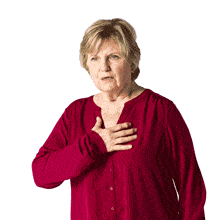
There is a decreased respiratory efficiency because of gradual lung fibrosis leading to breathlessness after a little physical strain.
MUSCULOSKELETAL SYSTEM
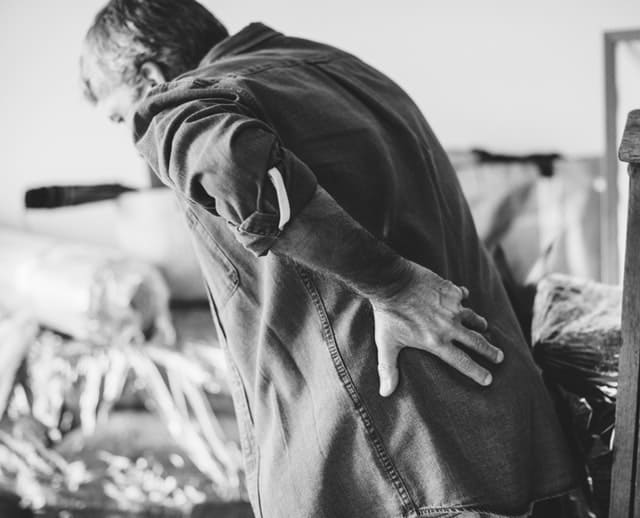
There is a loss of elasticity and resiliency in the muscles. The organic matrix of bone is reduced which makes the bone brittle and prone to fractures.
There is a reduction in osteoblastic activity and an apparent increase in the osteoclastic activity which leads to continuous resorption of the bone.
SKIN
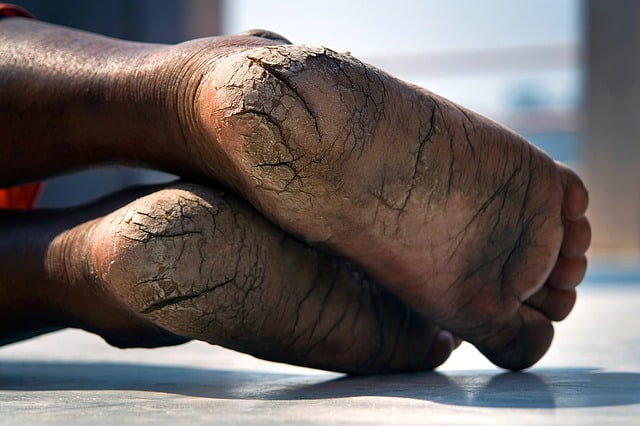
The skin of an aging person becomes thin, dry and inelastic. There is atrophy of sebaceous and sweat glands. The subcutaneous fat dissolves and hyperkeratotic areas become obvious.
NERVOUS SYSTEM
The cells of this system reach the highest degree of specialization. They die without being able to produce new cells.
Aging changes are most evident in such tissues and cells. Damage to the nerves or nervous system causes aging diseases like Parkinson’s disease and Alzheimer’s disease. These are characterized by partial or temporary loss of memory and tremors.
Bell’s Palsy a common facial nerve disorder leaves the affected side of the face numb and expressionless.
HEPATOBILIARY SYSTEM
Liver functions to produce bilirubin, metabolism, and excretion of cholesterol, drugs, hormones. Synthesis of Vitamin K a blood clotting factor. Aging has a widespread effect on the Liver and this needs to be addressed in detail for a successful treatment program.
AGING DISEASE
According to the various systems, some aging disease are as follows
NEUROMUSCULAR DISORDERS
Prosthodontist faces severe problems because of an altered capacity of motor learning in elderly patients.
There is a diminution of the brain substance.
The ventricular spaces also increase in size causing a further reduction in the brain substance. The patient with these disorders fails to comply with proper instructions.
The motor control of the brain is compromised which prohibits the Dentist to record fine details required to fabricate a prosthesis.
ENDOCRINE DISORDERS
One of the most popular aging disease is the onset of Diabetes. This is non-insulin-dependent diabetes (NIDDM). It affects a huge population and is associated with the inability of the body to respond to insulin secretion.
Uncontrolled or high levels of blood sugar result in poor oral health, delay in healing and resultant failure of dental prosthesis.
FLUID BALANCE
A significant deterioration related to aging is a disparity in the fluid levels of the elderly individual.
A detailed history of the patient will reveal the increase in the frequency of passing urine, especially at night time.
An effect of this is seen on the Sodium and Potassium levels of the body.
The primary function of these chemicals is to send nerve impulses by regulating their levels. Both are present in our daily diet.
A disparity in their levels can cause changes in blood pressure, delirium, and unconsciousness leading to a comatose state.
Patients with uncontrolled hypertension, kidney disease, heart disease show signs of altered levels of these salts.
AUTOIMMUNE DISEASES
Immunological disorders are prevalent in elderly patients. Rheumatoid arthritis is the most common of these diseases.
Autoimmune disease can be triggered in any system of the body.
However, in Prosthodontics Rheumatoid arthritis characterized by joint pains is of significance.
The severe forms affect the jaw movements as the TMJ gets affected.
Constant pain in the ankle, knee, and hip with high prevalence in females is a common feature.
ORAL ASPECTS OF AGING
We, as prosthodontists are the caretakers of the human masticatory apparatus and associated structures. We need to be familiar with the changes that take place due to aging in the structure and functions of the stomatognathic system.
This does not mean that we should only be concerned with the oral and dental aspects of aging disease but we should be treating the patient as a whole.
The effects of aging may include:
a) The oral mucosa and skin changes
b) Residual bone and maxillomandibular changes
c) Tongue and taste changes
d) Salivary flow changes
e) Change in the structure of teeth.
f) Presence of a disease affecting or aggravating the above changes
Oral mucous membrane and skin
The oral mucous of the aging person is friable and can be easily traumatized.
The aging cells do not enjoy optimal nourishment.
Due to vitamin A deficiency there is reduced cohesiveness and integrity of the epithelial layer.
There is a marked reduction in metabolic activity because of vitamin B deficiency and the presence of poorly differentiated connective tissue cells and fibers due to vitamin C deficiency. The inability of tissue to retain free fluids makes it dry.
The mucosa is thin, tightly stretched and easily blanched.
The atrophying oral mucosa is frequently encountered during menopause.
There is a reduction of estrogen output which causes the atrophic effect. For such kind of patient, hormonal replacement therapy is beneficial so as to create a more healthy and favorable environment for the prosthesis.
Aging also produces changes in the blood vessels. There is a presence of oral varicosities under the tongue and the floor of the mouth.
The degree of keratinization of the mucosa is of marked significance and must be carefully examined. Because of the lack of keratinization, the protective capacity of the mucosa is reduced and the aging mouth is more prone to suffer from chemical, bacterial and mechanical irritation. Therefore there is more irritation in aging patients due to the prosthesis placed in the mouth. The patient should be educated to accept long term adjustment.
The most dangerous problems associated with epithelial changes of aging disease arise with the increasing incidence of oral cancers.
75% of the persons in an age group of above 50 years lie in this category indicating a presence of aging disease.
Similar changes are also seen in the skin. The skin of the aging person is loose and wrinkled or tight smooth and thin. As the age increases the skin loses its fine pattern and elasticity. Because of concomitant atrophy occurring beneath the skin, there is a noticeable change in the face.
The muscles, fat and connective tissues all diminish in bulk.
Patient management requires to educate them to understand and accept reduced masticatory capacity.
Residual bone and maxillomandibular relation changes and aging disease
Bone is the most critical tissue for a prosthodontist and implantologist. If somehow the osteoblastic and osteoclastic activity is maintained, the problem of maintaining dentures would be greatly diminished.
But unfortunately, the osteoblastic activity comes almost to a standstill, therefore, more of resorption is seen due to osteoclastic activity.
There is a decrease in the anabolic process and an increase in the catabolic process. Calcium deficiencies and negative calcium balance are common in aging disease.
Even if there is sufficient Ca++ intake, the bones lack the ability to retain calcium. As calcium can be husbanded in the body only if there is ample phosphorus, the latter plays a very important role.
The health of the oral tissues also depends upon proper Ca++ and phosphorus balance.
If the patient is undergoing radiation therapy there is a decrease in the regeneration powder of bone because of osteoradionecrosis.
By observing the axial inclination of the teeth, one can predict the direction of bone resorption.
Maxillary teeth generally flare downward and outward so the resorption is upward and inwards. The resorption is faster and greater in the outer cortical plate as the outer cortical bone in the maxilla is thin.
The mandibular residual ridge resorbs lingually and inferiorly in the anterior region and buccally in the posterior region. Since the outer cortex is thicker than the inner cortex except in the posterior teeth region.
Consequently, the maxillary ridge seems to becomes smaller whereas the mandibular ridge in static and or becomes wider in the posterior region.
Diseases of the teeth associated with gums and dental caries also contribute to the rapid resorption of the underlying also relates to aging disease.
There are changes in the vertical dimension of the maxillomandibular relationship. With the passage of time muscle changes occur which are coupled by residual ridge reduction.
As accurate assessment must be made of the prepared interarch and interocclusal distance in elderly persons.
Collagen in the aging bone of the jaw
Collagen is the common copious protein in man and animals. It accounts for about 90% of the non-mineralized content of bone.
There are 11 genetically different types of collagen which have been assigned. The one found in the bone in Type I which is a rod-like molecule about 300nm in length and is made from 3 polypeptide chains wound into a triple helix and each molecule contains short non-helical peptide at each end (N-terminus and c-terminus).
In the extracellular matrix, type I collagen assembles into multi-unit structures called fibrils that provide the structural framework of bone.
The collagen fibers generally increase in stability with aging and this maturation process is related to the content/chemical nature of the cross-links.
ALVEOLAR OSTEOPOROSIS – MOST COMMON AGING DISEASE
Bone loss is a natural process of aging that affects the maxilla and mandible as well as the spine and long bones.
Various parts are assumed to contribute to age-related bone loss that commences to osteoporosis. That includes genetic background, hormonal status, bone density at maturity, a disturbance in the bone remodeling process, a feeble exercise level and poor nutrition.
The modern-day lifestyle of least exposure to natural light being the most important.
Low calcium consumption during life is a means of osteoporosis.
The physiologic form of the alveolar bone is maintained by a sensitive balance between bone production and bone resorption, which is governed mainly by local and to a lesser extent by systemic influences.
Trabecular bone in the alveolar process is a source of calcium that can be used to meet other tissue needs.
The alveolar bone plays in the keeping body calcium balance. Calcium is constantly being stored and withdrawn from the alveolar bone to cater to the needs of other tissues and to maintain the calcium level of the blood. As the alveolar bone acts as a reservoir of mineral ions to maintain more vital functions it is susceptible to osteoporosis.
With aging, the bone becomes less dense. Because of this alveolar susceptibility to osteoporosis, some investigators have suggested that internal alveolar resorption may result from dietary calcium deficiency or phosphorus excess, or a combination of both. Increased bone density has been noted in patients who have been given daily calcium supplements of 1 gm/day for a year.
Resorption of the alveolar ridge is a general problem among denture wearing patients and results in unstable dentures.
In the elderly, there tends to be a relative increase in bone disease and resorption compared with deposition. Some remodeling of the alveolar processes happens in reply to occlusal forces linked with chewing.
With the death of teeth, the alveolar process no longer serves its chief purpose of tooth support and consequently, resorption is hastened and bone height is diminished.
A larger degree of residual ridge resorption is seen in women than in men.
Bone loss is maximum in the first 6 months after tooth extractions, and resorption is much greater in the mandible than in the maxilla.
The extent of bone loss this way can be so much that the maxillary and mandibular ridges sometimes approach flatness. This decline in the vertical length of the bone and the changing of the angle of the mandible is displayed as a loss in face height and wrinkles in older people.
Also, the loss of alveolar bone frequently makes it more difficult to construct a mandibular denture that has good stability and retention.
Dietary calcium is critical to maintaining the body skeleton.
The usual significant means of limiting metabolic bone disease is acquiring a dense skeleton by the time bone maturation happens between 30 and 35 years of age. The calcium intake of postmenopausal women is correlated with mandibular bone mass.
An elder with dentures who have extreme ridge resorption reports lower calcium intakes.
A chronically low calcium intake results in a negative calcium scale.
For serum calcium levels to be sustained calcium is mobilized from the bone, and this leads to demineralization of the skeleton.
Although ample calcium consumption by older adults will not occur in the restoration of bone mass, it improves calcium balance and slows the rate of bone loss.
Poor vitamin D state is an important public health issue.
Sufficient consumption of vitamin D intensifies calcium absorption in the intestine.
Low dietary consumption, minimum exposure to sunlight and a lower frequency of exchange to the active metabolite in the liver and kidney are held for low plasma levels of vitamin D in the elderly population. In addition to these, long term Steroids medication also directs to severe Osteoporosis.
To promote bone health, postmenopausal women and andropausal men must strive to obtain vitamin D daily and should increase the intake with progressing age.
MANAGEMENT:
Administration of 750 – 1000 mg of calcium and 375 – 400 I.U. of vitamin D daily to patients with low serum calcium or high serum phosphorus or both.
Regular exposure of skin to sunlight in the daytime to absorb the rays. This initiates vitamin D formation which is absorbed in the bones.
Tongue and taste sensations alteration and aging disease
Taste is a major oral sensory system.
The study of taste in aging is complicated by the fact that tasting involves the cooperative functioning of several distinct sensory systems each of which might undergo independent change across the lifespan.
Taste incorporates input from oral taste receptors along with input from other oral and extraoral sensory systems. Oral sensory systems include temperature, touch, pain and the sensory-motor mechanisms involved in manipulating substances in the mouth. These systems combine with others to produce subjective impressions of bulk, stickiness, dryness, wetness, and crispness.
Effects of age upon taste perception might arise from age affects the anatomy of the taste system. The taste buds are found in fungiform papillae on the lateral portions of the anterior dorsal tongue, in the circumvallate papillae on the posterior dorsal surface and in the slit-like foliate papillae located on the posterior lateral aspect of the tongue. The fungiform papillae contain from zero to fifteen taste buds, circumvallate papillae has an average no. in the range of 100-200 and foliate may also contain more than 100 taste buds. Other taste buds are present their out the oral cavity notably at the junction of the hard and soft palate.
As the aging process takes place there is a change in the number or morphology of taste buds. The tongue is depapillized due to aging. The depapilization begins at the apex and the lateral border of the tongue.
It becomes smooth and glossy or red and inflamed in appearance.
The tongue seems to increase in size, there is a loss of muscle tone.
Glossodynia and glossopyrosis are common complaints.
Vitamin B12 deficiency in menopausal women is characterized by a triad of symptoms:
a) Generalized weakness.
b) Sore, painful tongue.
c) Tingling of the extremities.
The elderly person who live on tea and toast usually suffer from iron deficiency anemia whose oral manifestations are glossitis and fissures at the corners of the mouth.
GLOSSODYNIA AND GLOSSOPYROSIS (PAINFUL AND BURNING TONGUE)
A painful and burning tongue is often encountered in nutritional anemias associated with deficiencies of vitamin B12, folic acid or iron.
Vitamin B12 deficiency (pernicious anemia) is seen with increased frequency in older people, especially in women and is characterized by a sore painful tongue and numbness or tingling of the extremities.
The tongue converts dark red with progressive atrophy of papillae showing a smooth or bald exterior. Not uncommonly in anemic patients, the oral mucosa becomes sensitive and intolerant to dentures.
Folic acid efficiency like vitaminB12 deficiency causes megaloblastic anemia.
Elderly patients who live on a tea-and-toast diet are prime candidates for iron deficiency anemia. However, an adequately nourished older man or postmenopausal woman would probably not have this problem unless there is hemorrhage.
MANAGEMENT:
Supplements the diet with 5 – 15 mg of folacin tablets daily until reticulocyte count increases. This improvement is maintained with doses of 2 – 5 mg daily.
Best food sources are yeast, fresh green vegetables, liver, and fruits.
Ingestion of iron-rich foods such as liver, eggs, spinach, and cereals as well as iron supplements like 1 gm of ferrous in 4 divided doses.
Salivary gland changes and aging disease
Salivary secretion is usually a reflex response to movement of the jaw during chewing or speaking.
The flow can be increased by aromas of food and stimulation of other special senses and can be reduced due to a variety of causes such as fear, anxiety, deficiency diseases, and alcoholics.
The progressive age-related alterations in major and minor salivary glands include fibrosis, adiposity, and loss of acinar elements.
There is a decrease in salivary flow the diminished function of salivary glands also results in physicochemical changes.
A decrease in ptyalin content and an increase in mucous content.
The saliva is viscous and ropy.
The oral mucosa becomes dry and inelastic resulting in cracking of lips and fissuring of the tongue.
The retention of dentures is also affected making the fabrication difficult.
Chewing swallowing becomes difficult because the decrease ptyalin content the digestion of cooked starch is also reduced.
Histological changes in the salivary glands :
There is no doubt that salivary glands undergo histological changes as well. Depending upon the species and type of gland the salivary parenchyma consists of serous, mucous or mixed acini with various types of ducts arranged in morphological units of lobules. There is a progressive disparity of size and shape of lobes and lobules. Hamperl in 1931 showed evidence of atrophy of acini and a relative increase in the intralobular ducts. The ducts also became hyperplastic and dilated.
There is an increase in oncocytes which are prominent features of salivary tumors, the so-called oncocytoma and are associated with a dilator and cystic obstruction of the salivary ducts.
Changes in the structure of teeth
Like all other oral tissues, the tooth also undergoes.
There is a loss of calcified tooth structure i.e. enamel leading to sensitivity.
There is a recession of pulp in the pulp chamber due to the deposition of secondary dentine.
There is also a recession of the marginal gingiva leading to exposure of cementum.
The immune system of the elderly patient is compromised due to aging thus making the patient more susceptible to periodontal disease which subsequently leads to loss of the tooth.
A SUPPLEMENTARY DIET FOR AGING
A nutritious diet plan should be made for the elderly patient keeping in mind the various systemic aging disease associated with particular individuals.
Food should be easily chewable, digestible, and should restore nutrients as per requirement.
Soup and broth of either vegetables or non-vegetables should be a daily menu item.
Bounded fluid as they are called tends to restore the fluid levels in the body. This allows the oral cavity to wear the prosthesis designed to restore the prime function of chewing, speech, and esthetics.
The elderly patient in a Dental clinic for rehabilitation throws numerous challenges.
Meticulous clinical examination of the patient which identifies the underlying disease or condition of the patient should be identified.
Various laboratory examinations are available to accurately identify the degree of severity of a disease. All the necessary adjuncts are accumulated and utilized to plan and execute a long term treatment plan.
SUMMARY
Aging is a physiological eventuality in everyone’s life.
As the saying goes “Age gracefully” everyone desires such a state.
Modern-day life and medical advancements assure this comes true.
The Prosthodontist plays a pivotal role in this field. A specialist in geriatric patients.
A piece of sound knowledge and understanding of medical conditions and diseases is required.
The majority of the elderly population suffers from some sort of underlying systemic disease. Common among them are Heart disease, Respiratory disease, Stomach ailments, Diabetes, Bone disease, and neurological disorders.
To add to these a large number of patients suffer from poor eyesight and hearing impairments.
Therefore a combined condition results in a slow response by the patients.
A thorough record of medicine taken by the patients is recorded.
Special care and attention should be paid to the diseases and conditions that can flare up or take an acute form either during treatment or afterward.
A combination of appropriate medical support, diligent Prosthodontic work enables the elderly patient to experience the saying, “Ageing Gracefully”.